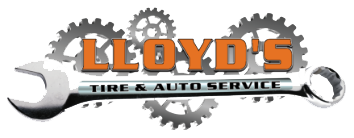Fall Tire Preparation for Richmond Drivers
Fall weather in Richmond brings temperature fluctuations, increased rainfall, and leaf-covered roads that challenge tire performance. Preparing your tires for seasonal changes ensures safe traction, optimal performance, and extended tire life throughout autumn and into winter months.
Temperature Effects on Tire Performance
Tire pressure decreases approximately one pound per square inch for every 10-degree temperature drop. As Richmond temperatures cool from summer highs to fall lows, tires lose pressure and require regular monitoring to maintain optimal performance and safety.
Under-inflated tires increase rolling resistance, reduce fuel economy, and wear unevenly. Cold weather exacerbates these problems, making regular pressure checks essential during temperature transitions common in Virginia's fall season.
Tread Depth and Wet Weather Performance
Fall rain and wet leaves create slippery road conditions that require adequate tire tread depth for safe traction. Tires with insufficient tread depth cannot channel water effectively, increasing hydroplaning risk during heavy rainfall periods.
The penny test provides a quick tread depth assessment: insert a penny head-first into tire grooves. If you can see the top of Lincoln's head, tread depth has reached the replacement threshold and new tires are needed for safe wet weather driving.
Tire Rotation and Even Wear
Fall presents an ideal opportunity for tire rotation to ensure even wear patterns before winter driving demands begin. Different wheel positions experience varying wear rates based on vehicle weight distribution and driving patterns.
Regular rotation extends overall tire life and maintains consistent traction across all four tires. Uneven wear creates handling imbalances that become more pronounced on wet or slippery surfaces common during fall weather.
All-Season vs. Winter Tire Considerations
Richmond's moderate winter climate makes all-season tires suitable for most drivers, though winter tires provide superior performance in temperatures below 45 degrees Fahrenheit. The rubber compounds in winter tires remain flexible in cold weather, providing better traction on cold, wet, or icy surfaces.
Drivers who frequently travel to mountainous areas or experience extended cold periods may benefit from dedicated winter tires. Professional consultation helps determine the best tire choice based on specific driving patterns and weather exposure.
Professional Tire Services
Professional tire inspection identifies wear patterns, damage, and performance issues that affect seasonal driving safety. Our tire services include comprehensive evaluations that ensure your tires are prepared for fall and winter driving conditions.
Wheel alignment and balancing services optimize tire contact with road surfaces, improving traction and preventing premature wear. These services become particularly important as driving conditions become more challenging during fall weather.
Tire Storage and Seasonal Changes
Drivers who switch between summer and winter tires need proper storage procedures to maintain tire condition during off-seasons. Clean tires thoroughly before storage, maintain proper pressure, and store in cool, dry locations away from direct sunlight and ozone sources.
Tire mounting and balancing should be performed each time seasonal tires are installed. This ensures optimal performance and prevents vibrations that could indicate mounting problems or wheel damage.
Emergency Preparedness
Fall weather can create unexpected driving challenges that require emergency preparedness. Ensure your spare tire is properly inflated and in good condition. Verify that jack and lug wrench are present and functional for roadside tire changes.
Consider emergency supplies including tire sealant, portable air compressor, and reflective triangles for roadside safety. These items help manage minor tire problems and improve safety during roadside assistance situations.
Fuel Economy and Tire Maintenance
Proper tire maintenance directly affects fuel economy, which becomes more important as driving increases during fall activities and holiday preparations. Correctly inflated tires with proper alignment reduce rolling resistance and improve gas mileage.
Regular tire maintenance combined with other vehicle systems creates optimal efficiency. Professional preventative maintenance ensures all systems work together effectively for maximum fuel economy and performance.
Safety During Leaf Season
Wet leaves create surprisingly slippery conditions that require cautious driving and adequate tire tread. Fallen leaves can hide road hazards, potholes, and debris that could damage tires or cause sudden deflation.
Reduce speed on leaf-covered roads and avoid sudden acceleration, braking, or steering inputs that could cause loss of traction. Good tires with adequate tread depth provide the best possible traction under these challenging conditions.
For comprehensive fall tire preparation and professional tire services in Richmond, contact Lloyd's Tire & Auto at (804) 737-2828 . Our experienced team ensures your tires are ready for fall weather challenges and safe seasonal driving throughout the Richmond area.
